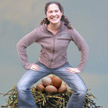
Bridget Murphy
Favourite Thing: I like to find out new things about cool animals, especially reptiles
My CV
School:
St. Gabriels Primary School (1992-1997), St. George Girls’ High School (1998-2003)
University:
I’ve done a Bachelor of Science (Honours) at the University of Sydney. I’m now doing a PhD at the same uni.
Work History:
My previous jobs include: identifying different reptiles and fish at the Australian Museum; being a science consultant for a kids’ science TV show; a swimming teacher; a soccer referee
Employer:
University of Sydney, TAFE NSW
Current Job:
I teach biology to university and TAFE students
Me and my work
I want to find out why some lizards lay eggs while other lizards give birth to live young
Our ancient ancestors laid eggs instead of having babies – that’s why I’m sitting on the eggs in my profile picture! Then, during the time of the dinosaurs, live birth (viviparity) evolved when the first mammals emerged.
Fossils of early mammals can tell us about the evolution of hard body parts, like bones and teeth. But reproductive organs of animals are soft and don’t fossilise very well, so we don’t know much about how live birth and pregnancy evolved in the first mammals.

Photo: The eastern water skink gives birth to live young instead of laying eggs
While all mammals have made the switch from laying eggs (oviparity) to live birth, reptiles (particularly lizards and snakes) are still undergoing this change. While most lizards and snakes lay eggs, about 20% are viviparous. I have been comparing the reproductive systems of egg-laying and live-bearing lizards and snakes to find out how viviparity might have evolved in our distant mammalian ancestors.
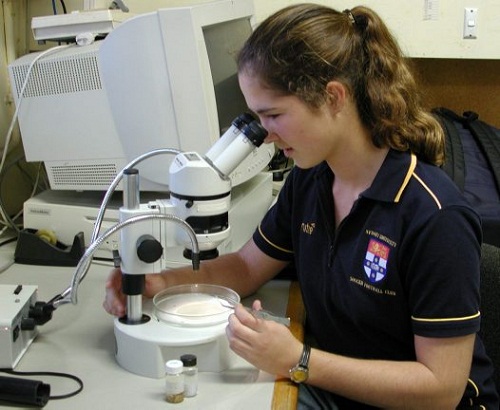
Photo: I use microscopes in the lab to look at baby lizards
I’m a PhD student at the University of Sydney and I use many different methods to study lizard reproduction, including decoding their DNA, using microscopes to look at how baby lizards develop during pregnancy, and using coloured chemicals to find out where different proteins occur in the reproductive system.
My Typical Day
I’m always doing something different – I could be catching lizards in the bush, in the lab looking down a microscope, or at my desk writing. On busy days I do all three!
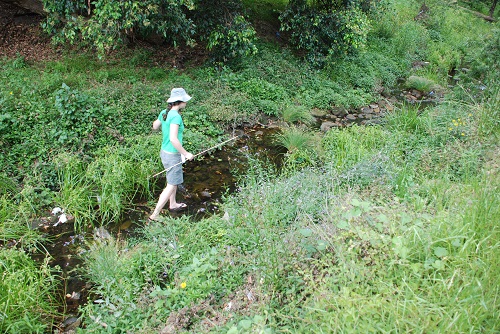
Photo: Looking for lizards at the creek
I catch eastern water skinks at a creek near my house. I have to get permission from the university and the council to do this.

Photo: Caught one!
Back at the lab, I use high-powered microscopes to look at baby lizards growing inside their mother’s uterus. I also decode parts of the lizards’ DNA.

Photo: This is what a baby lizard looks like during pregnancy. It hasn’t developed any scales or teeth yet.
Then I might google some research articles about lizards before I go home and go for a run with my dog Jess.
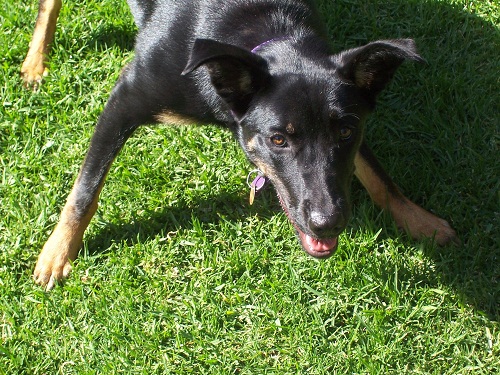
Photo: This is Jess. She is a kelpie and likes to run a lot!
What I'd do with the money
I would use the money to develop science programs for primary school students
Sometimes I think that primary school students miss out a little on doing cool science activities and have to wait until high school to play with bunsen burners and microscopes.
Science Exchange is an organisation that does a fantastic job getting school students and the general community excited about science. I would like to contribute the money to Science Exchange to help them make their primary school programs even better. Maybe they could even start a web-based program like “I’m a Scientist” for primary school students. What do you think? Would you have liked to do more science activities in primary school?
My Interview
How would you describe yourself in 3 words?
Friendly, sporty, enthusiastic
Who is your favourite singer or band?
I have to confess that I don’t own an iPod, so my favourite music is whatever is playing on the radio.
What is the most fun thing you've done?
I was lucky enough to travel through Vietnam in January – awesome people, awesome food!
If you had 3 wishes for yourself what would they be? - be honest!
1) To be happy, 2) To be healthy, 3) To have three more wishes.
What did you want to be after you left school?
Plan A was to be a famous soccer player. Plan B was to be a scientist!
Were you ever in trouble in at school?
Not really – I think I once got in trouble for throwing lego in year 5.
What's the best thing you've done as a scientist?
I get to see so many cool animals, like chameleons and goannas. Just last week I got to hold some baby crocodiles – so soft!
Tell us a joke.
This happened to a girlfriend of mine at work the other day. She caught a guy looking at her and she asked him: “What are you looking at?” He replied, “I don’t know, I don’t have my animal identification book with me.” Ouch!
Sports followed
Favourite team
My profile link:
https://hydrogenj11.imascientist.org.au/profile/bridgetmurphy/
 Print this profile
Print this profile



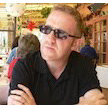
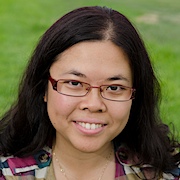
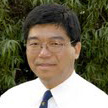
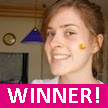




 Print this profile
Print this profile